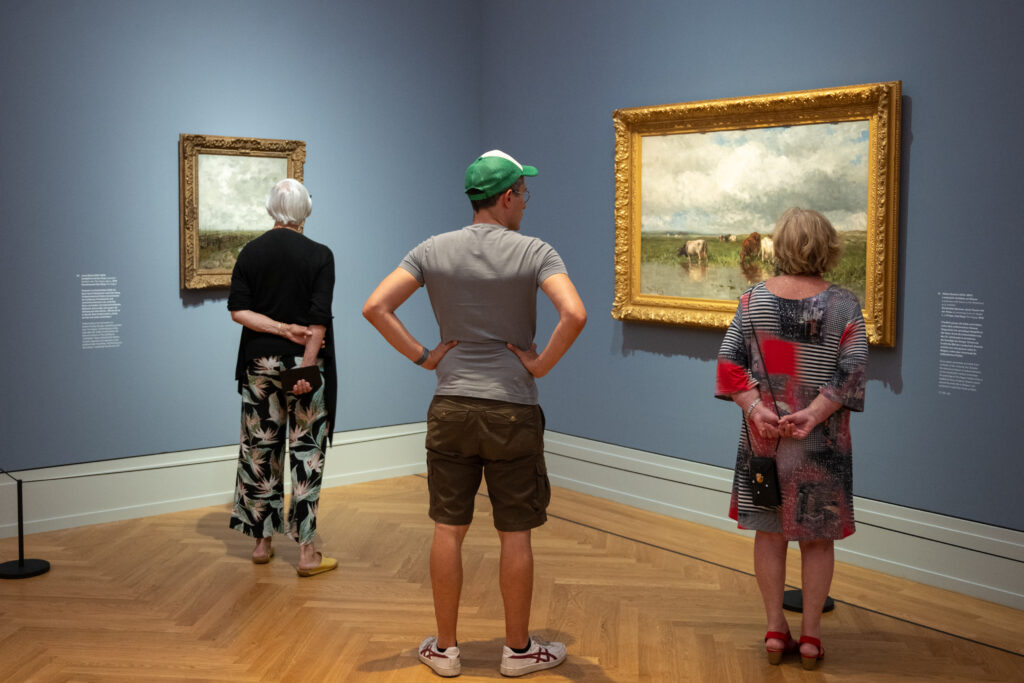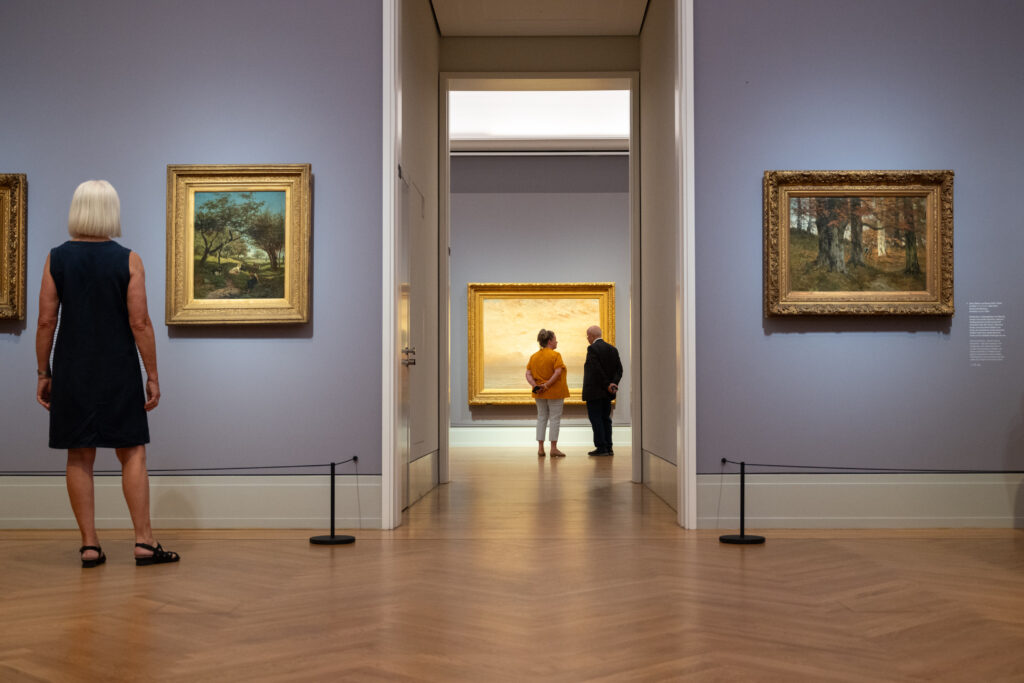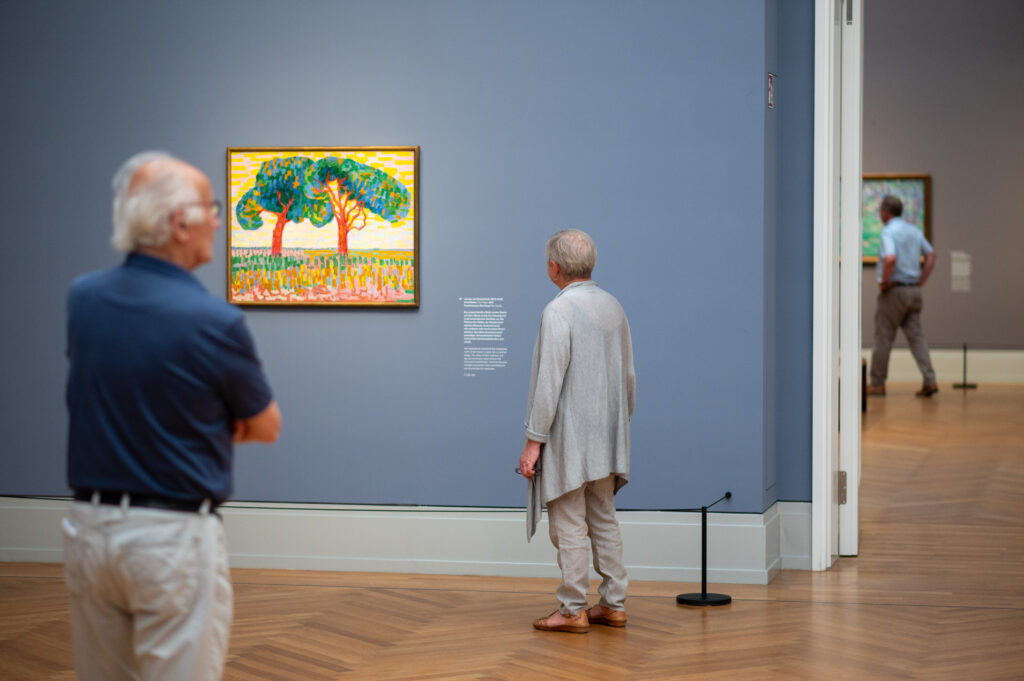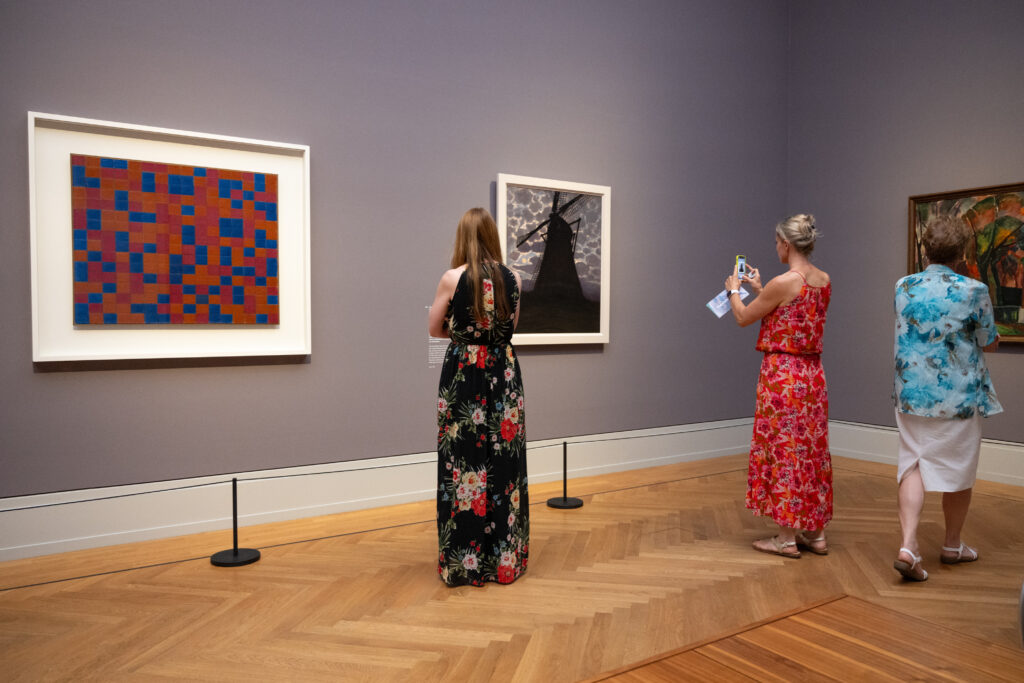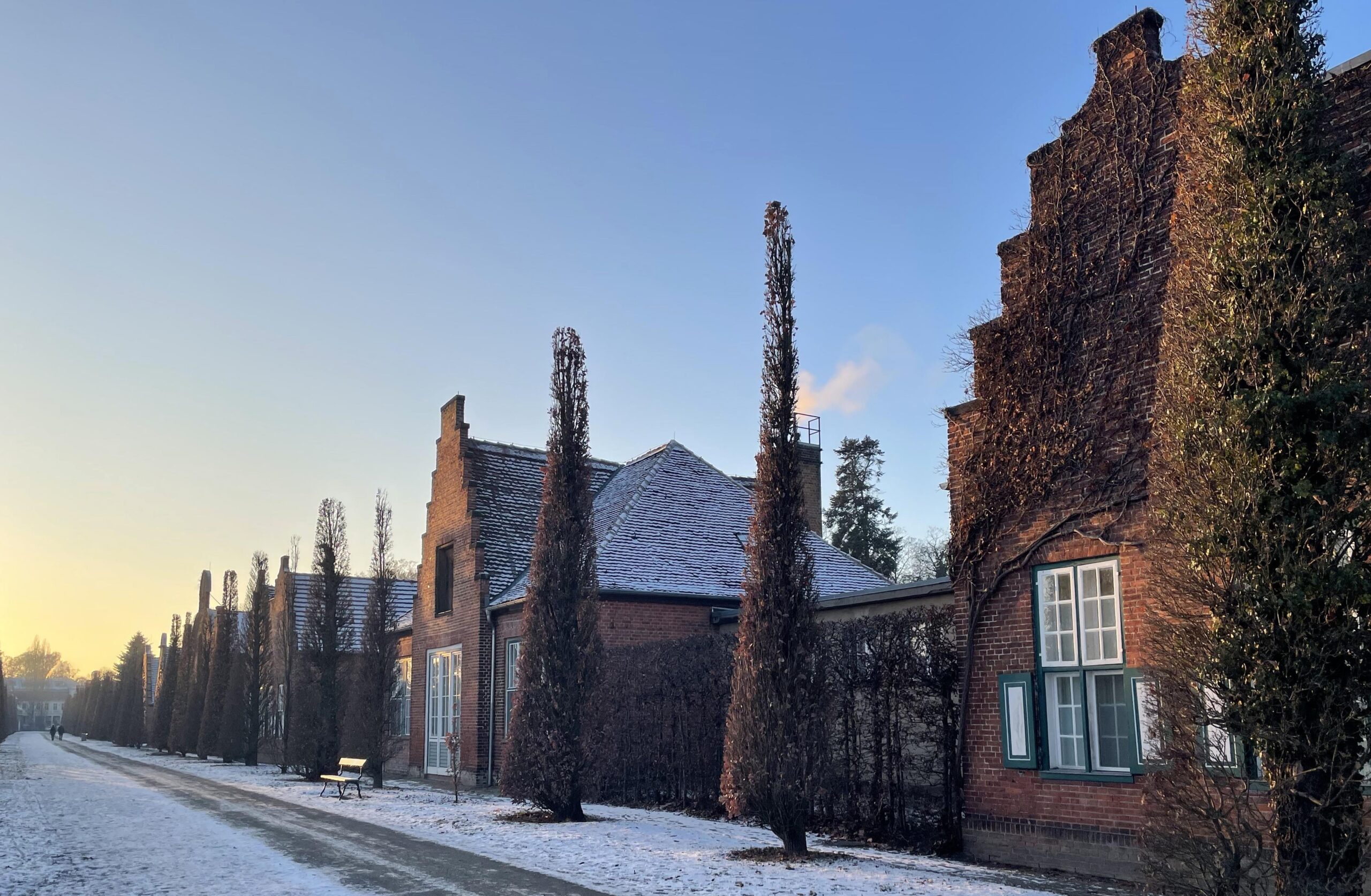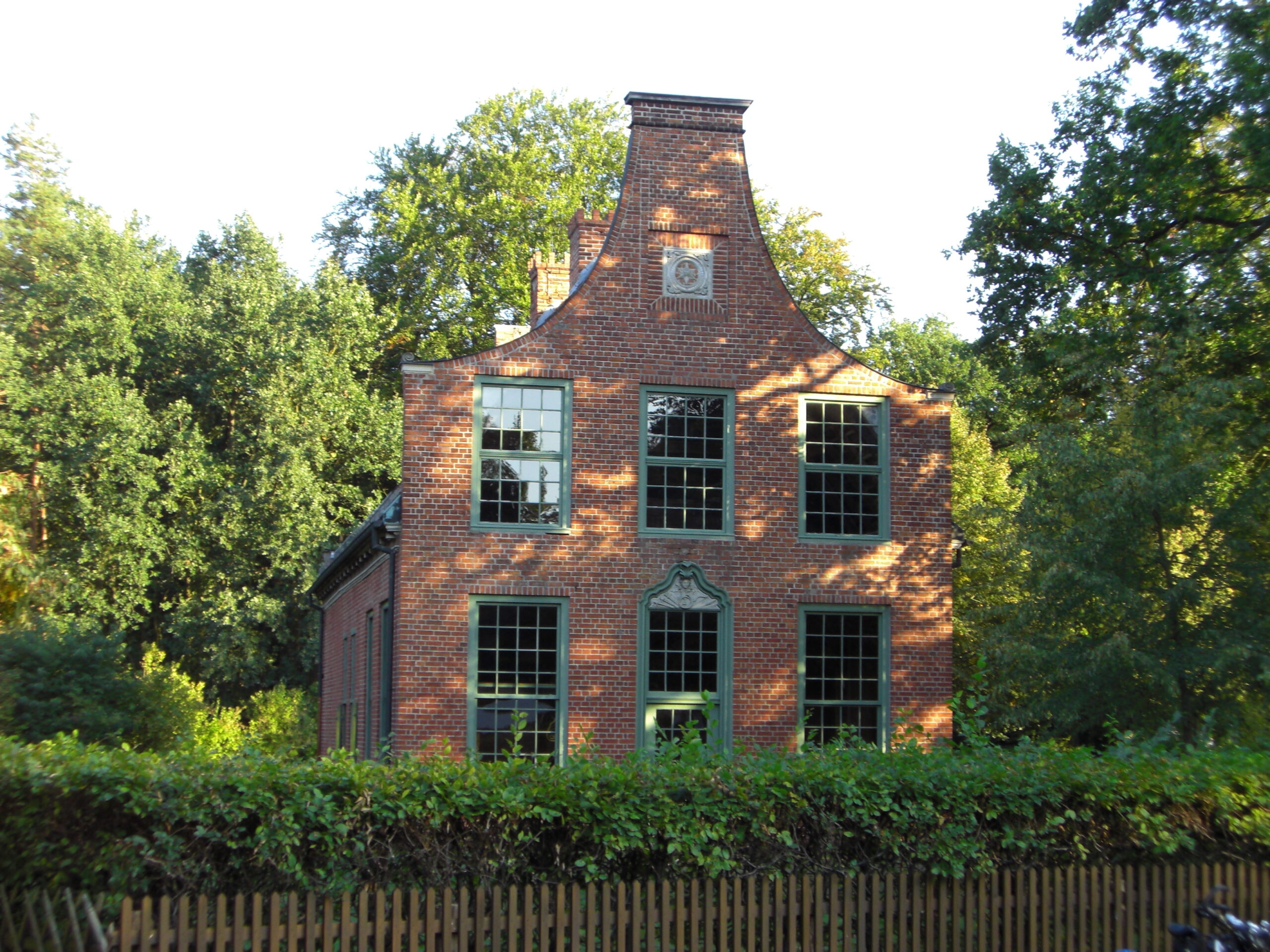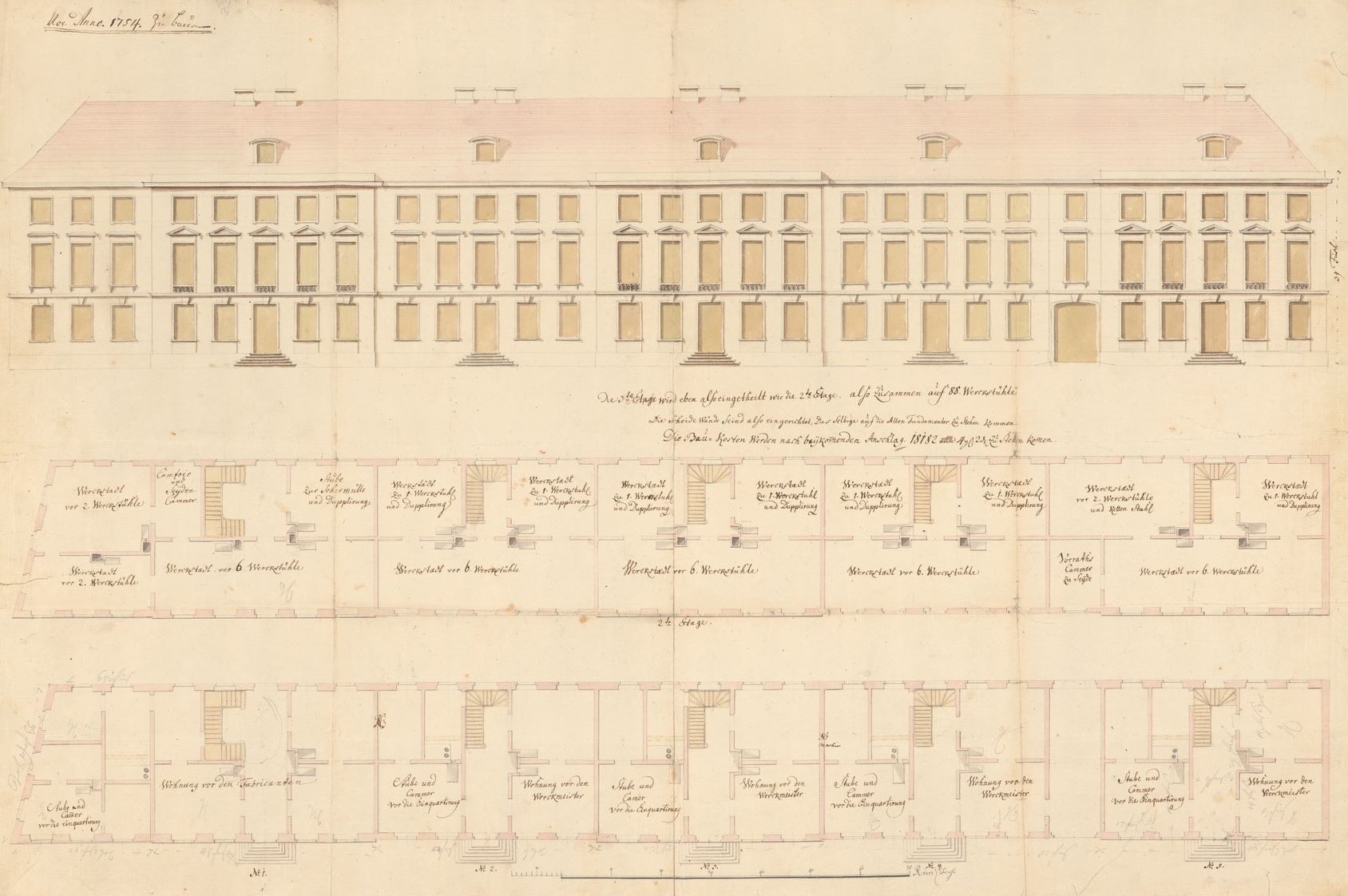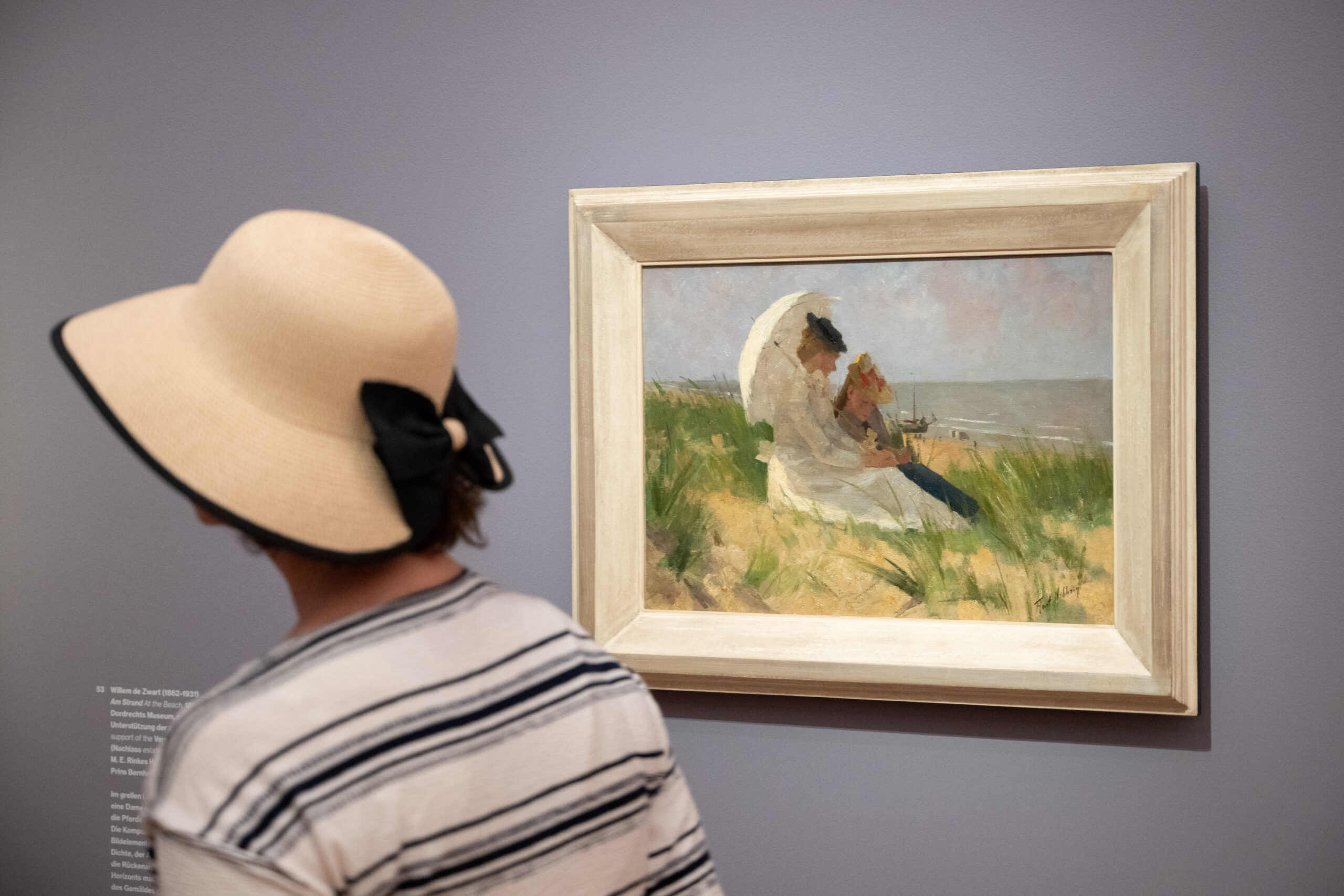
Eindelijk geopend
The exhibition Clouds and Light: Impressionism in Holland at the Museum Barberini is open! For the first time, Dutch Impressionism from 1850 to 1910 can be experienced in all its facets in a comprehensive show. Presented are 110 paintings by 39 artists, including Vincent van Gogh, Johan Barthold Jongkind, Jacoba van Heemskerck and Piet Mondrian and many Dutch light artists still largely unknown in this country.
European Landscape Painting: A Dutch Invention
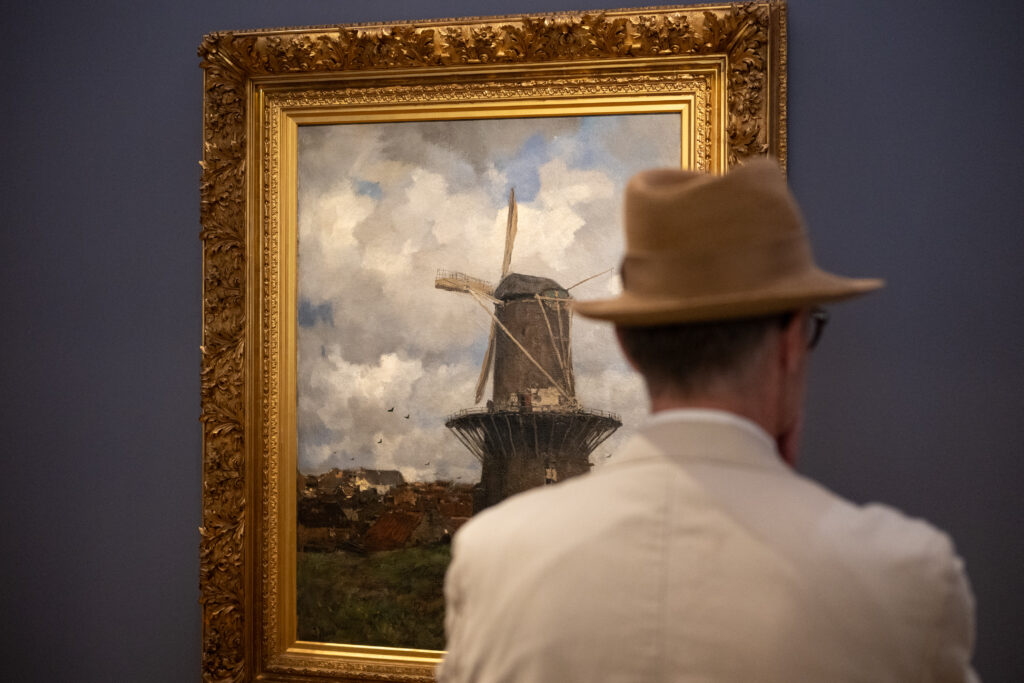
Clouds, waves, and beaches had featured in the landscapes of the Netherlandish Old Masters since the seventeenth century. Not until the early nineteenth century did landscape painting gain relevance for the rest of Europe with Caspar David Friedrich, William Turner, and Pierre-Henri de Valenciennes. When the plein air painters of French Impressionism began celebrating the fleeting moment as the epitome of modernity, Dutch artists were inescapably challenged to react.
The exhibition “Clouds and Light: Impressionism in Holland” explores this European dialogue, tracing the development of Dutch art from the 1840s to the 1910s in its conversation with Impressionism.
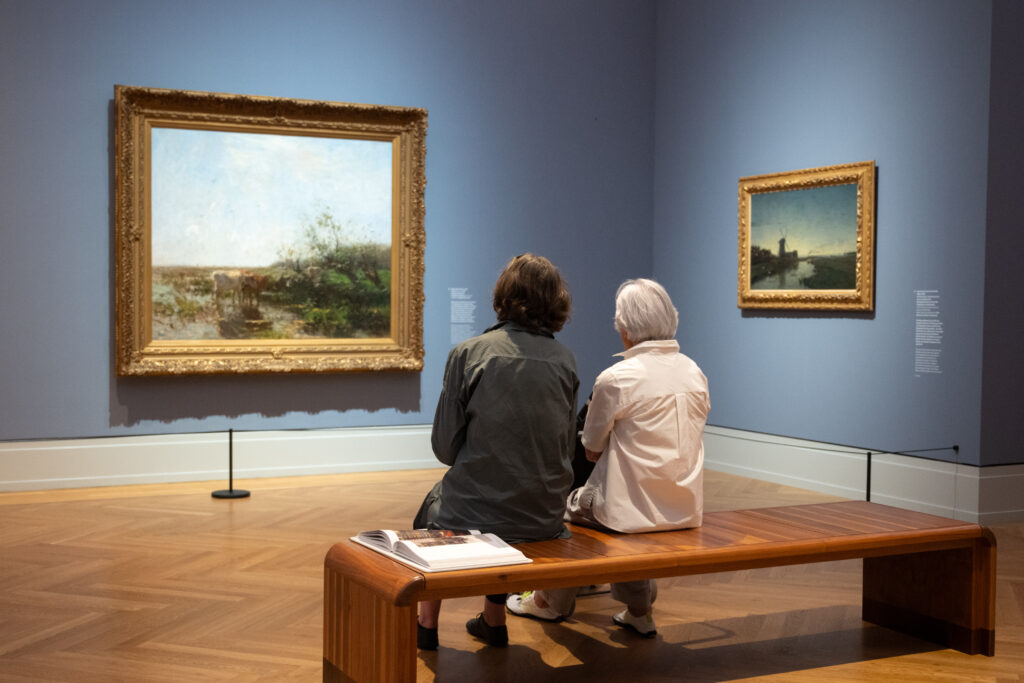
The French Impressionists, too, admired the landscape painting of the Dutch Old Masters, though their interest was focused less on identification with a national landscape than on the realism of its style. In 1871, Claude Monet spent four months in Holland, where in the 1840s his role model Gustave Courbet had also sought refuge from the French art world, seeking to hone the characteristic immediacy and realism of his painting through the study of clouds and waves. The Hasso Plattner Collection at the Museum Barberini holds two of Monet’s paintings from this sojourn in Holland. They show an intensity of color and an energetic, compact style that is unusual for his early work.
From the Hague School to Luminism
Dutch artists encountered the works of the Barbizon painters during visits to France and, from the 1880s on, in the collection of the painter Hendrik Willem Mesdag in The Hague. Like the French Impressionists in the forest of Fontainebleau, Dutch artists painted the light filtering through the trees in the woods of Oosterbeek as early as the 1850s.
The Hague School turned its attention to the polder landscape beneath broad skies, echoing the cloud paintings of the Old Masters just as Eugène Boudin was doing in France. The paintings of Willem Roelofs, Anton Mauve, and Jacob Maris are characterized by luminous grays that transform the rain-heavy clouds over the meadows into the protagonists of their images. The beach is the arena of fishermen, who go out to sea or return with their catch; here, in contrast to the marine painting or ocean views of Romanticism, subjective observation is already determinative.
In the 1880s, the painters of the Hague School were succeeded by the Amsterdam Impressionists, who discovered the city as the locus of modern life with its shopping streets, coffeehouses, and electric lights. The beach now became the setting for leisure activities like strolling or riding donkeys. Artists such as George Hendrik Breitner and Isaac Israels, who knew the work of Claude Monet, Auguste Renoir, and Gustave Caillebotte from exhibitions in Paris, sought out motifs of technological progress and social change in their own environment.
From 1890 on, the next generation of Dutch artists drew inspiration from French and Belgian Pointillism, which they saw at exhibitions in Amsterdam and Leiden. After 1905, the landscapes created under the influence of French Fauvism soon came to be known as Luminism. Unmixed colors, expressively exaggerated in simultaneous contrasts, connect the late work of Vincent van Gogh to the early, Pointillist phase of Piet Mondrian and demonstrate that the avant-garde in Holland, too, was fueled by Impressionism.
On the website of the Museum Barberini you will find further background information on the exhibition, press reviews, expert talks, event tips as well as practical information for your visit of the museum.
Header image and all further photos: Museum Barberini, Sebastian Bolesch

